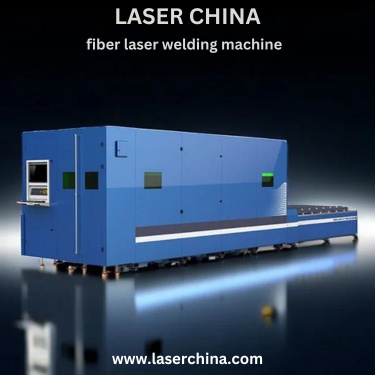Fiber laser welding machines have revolutionized the welding industry with their precision, speed, and versatility. Whether you're a seasoned professional or just starting, understanding how these machines work and how to use them effectively is crucial. This guide aims to provide a comprehensive overview of fiber laser welding machine, covering everything from their principles of operation to practical tips for optimizing weld quality.
Principles of Operation: Fiber laser welding machines utilize high-intensity laser beams generated by rare-earth-doped fiber amplifiers. These lasers produce coherent light that can be precisely focused onto the welding area. The focused laser beam rapidly heats the material, causing it to melt and form a weld pool. As the laser moves along the joint, the melted material solidifies, creating a strong bond.
Key Components:
- Laser Source: The heart of the machine, responsible for generating the high-powered laser beam.
- Beam Delivery System: Transmits the laser beam from the source to the focusing optics.
- Focusing Optics: Concentrates the laser beam onto the workpiece, determining the weld's depth and width.
- Workpiece Manipulation System: Controls the movement of the workpiece relative to the laser beam, ensuring precise positioning.
- Control System: Orchestrates the operation of various components, including power modulation and beam delivery.
Setup and Calibration:
- Proper Alignment: Ensure that the laser beam is accurately aligned with the workpiece to achieve optimal weld quality.
- Focus Adjustment: Fine-tune the focusing optics to achieve the desired weld penetration and width.
- Power Optimization: Adjust the laser power settings based on the material type, thickness, and desired welding speed.
Best Practices:
- Material Preparation: Clean the surfaces to be welded thoroughly to remove any contaminants that could affect weld quality.
- Joint Design: Optimize joint design to facilitate efficient heat transfer and minimize distortion.
- Welding Technique: Maintain consistent travel speed and laser power to produce uniform welds with minimal defects.
- Monitoring and Inspection: Continuously monitor the welding process and inspect the quality of the welds to detect any issues early on.
Safety Precautions:
- Eye Protection: Wear appropriate laser safety goggles to protect against accidental exposure to the laser beam.
- Ventilation: Ensure adequate ventilation in the welding area to remove fumes and gases generated during the process.
- Machine Maintenance: Regularly inspect and maintain the machine components to prevent malfunctions and ensure safe operation.
Conclusion: fiber laser welding machine offer unmatched precision and efficiency, making them indispensable tools in various industries. By understanding their principles of operation, optimizing setup parameters, and following best practices, you can achieve high-quality welds consistently while ensuring safety in the workplace. Mastering the art of fiber laser welding opens up a world of possibilities for creating strong, reliable joints in metal fabrication.


No comments yet